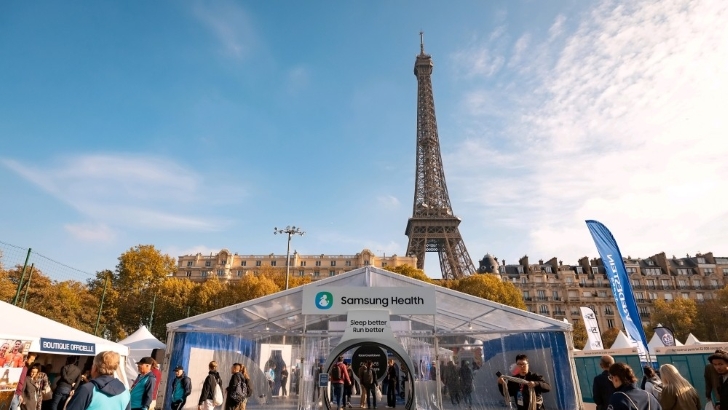Perioperative enfortumab vedotin-ejfv (Padcev) plus pembrolizumab (Keytruda) with radical cystectomy and standard pelvic lymph node dissection (RC + PLND) significantly improved event-free survival (EFS), overall survival (OS), and pathologic complete response (pCR) rate vs RC + PLND followed by observation alone in patients with muscle-invasive bladder cancer (MIBC) who were not eligible for or refused cisplatin-based chemotherapy, according to data from the phase 3 KEYNOTE-905 study (NCT03924895).1
The data, which were shared during the 2025 ESMO Congress as part of a late-breaking session, showed that enfortumab vedotin plus pembrolizumab (n = 170) led to a median EFS that was not reached (NR; 95% CI, 37.3-NR) vs 15.7 months (95% CI, 10.3-20.5) with the control (n = 174; HR, 0.40; 95% CI, 0.28-0.57; 1-sided P < .0001). The 12-month EFS rates in the respective arms were 77.8% and 55.1%; the 24-month rates were 74.7% and 39.4%.
Top Takeaways from KEYNOTE-905:
- Perioperative enfortumab vedotin plus pembrolizumab plus RC + PLND significantly improved EFS (HR, 0.40), OS (HR, 0.50), and pCR (57.1% vs 8.6%) vs RC + PLND alone in cisplatin-ineligible or -refusing patients with MIBC.
- Consistent benefit with the addition of enfortumab vedotin plus pembrolizumab to RC + PLND was seen across subgroups: Improvements in EFS and OS were observed regardless of age, ECOG performance status, PD-L1 expression, or tumor stage, supporting broad applicability across patient subsets.
- AEs were consistent with known toxicities of enfortumab vedotin and pembrolizumab, with no new safety signals identified.
- The combination could represent a new standard of care in this high-need population.
Moreover, the median OS with enfortumab vedotin plus pembrolizumab was also NR (95% CI, NR-NR) vs 41.7 months (95% CI, 31.8-NR) with the control (HR, 0.50; 95% CI, 0.33-0.74; 1-sided P = .0002). The 12- and 24-month OS rates in the enfortumab arm were 86.3% and 79.7%, respectively; in the control arm, these rates were 75.7% and 63.1%. The pCR rate with enfortumab plus pembrolizumab was 57.1% (95% CI, 49.3%-64.6%) vs 8.6% (95% CI, 4.9%-13.8%) with the control, translating to an estimated difference of 48.3% (95% CI, 39.5%-56.5%) between arms (1-sided P < .000001).
“KEYNOTE-905 is the first phase 3 study to show improved efficacy outcomes with perioperative therapy relative to surgery for patients with MIBC who are ineligible for cisplatin-based chemotherapy,” Christof Vulsteke, MD, PhD, of the Integrated Cancer Center Ghent, AZ Maria Middelares, in Belgium, and the Center for Oncological Research at Antwerp University in Belgium, said in a presentation. “Perioperative enfortumab vedotin plus pembrolizumab added to RC + PLND may represent a new standard of care in this population with high unmet clinical need.”
Topline data from KEYNOTE-905 were previously announced in August 2025.2
What Did the KEYNOTE-905 Study Evaluate?
The trial enrolled adult patients with MIBC who had an ECOG performance status ranging from 0 to 2, clinical stage T2 to T4aN0M0 or T1 to T4aN1M0 disease by central assessment, and at least 50% urothelial histology.1 Patients were either ineligible to receive cisplatin per Galsky criteria, or they had refused it.
Patients (n = 344) were randomly assigned 1:1 to receive pembrolizumab at 200 mg every 3 weeks (Q3W) for 3 cycles with enfortumab vedotin at 1.25 mg/kg on days 1 and 8 Q3W, then RC + PLND followed by adjuvant pembrolizumab at 200 mg Q3W for 14 cycles plus enfortumab vedotin at 1.25 mg/kg on days 1 and 8 Q3W (n = 170) or RC + PLND followed by observation (n = 174). They were stratified based on cisplatin ineligibility (ineligible vs eligible but declining), clinical stage (T2N0 vs T3/T4aN0 vs T1 to 4aN1), and region (United States vs European Union vs most of world).
The primary end point of the study was EFS by blinded independent central review, and key secondary end points were OS and pCR by central pathologist review. Investigators also evaluated safety and EFS by pCR status.
In 2019, the study launched with 2 treatment arms, where patients were randomly assigned 1:1 to receive perioperative pembrolizumab with RC + PLND vs RC + PLND alone. A year later, in 2020, the third treatment arm, perioperative enfortumab vedotin plus pembrolizumab with RC + PLND, was added; patients were then randomly assigned 1:1:1 between the 3 arms. In 2022, investigators expanded the inclusion criteria to include patients who were eligible for cisplatin but refused cisplatin-based treatment. In the same year, they stopped randomly assigning patients to receive pembrolizumab plus RC + PLND and updated the trial enrollment to a 1:1 randomization for the enfortumab vedotin and control arms. They allowed patients in the control arm to receive adjuvant nivolumab (Opdivo) when indicated and available.
The efficacy of enfortumab vedotin plus pembrolizumab and RC + PLND was compared with the control and evaluated in all concurrently randomly assigned patients; these patients comprised the intention-to-treat (ITT) population. Investigators evaluated safety in all patients who had received at least 1 dose of treatment, including surgery. KEYNOTE-905 will continue to examine additional hypotheses for the perioperative pembrolizumab arm, Vulsteke said.
What Were the Baseline Characteristics of Patients Enrolled to KEYNOTE-905?
The median patient age was 74.0 years (range, 47-87) in the enfortumab vedotin arm vs 72.5 years (range, 46-87) in the control arm. Most patients were male (80.6% vs 75.3%), had an ECOG performance status of 0 (60.0% vs 54.6%), and were from the European Union (45.9% vs 44.3%) or most of the world (41.8% vs 42.5%). The majority of patients were not eligible for cisplatin (83.5% vs 79.9%), although 16.5% vs 20.1% of patients were eligible but refused cisplatin-based treatment. In the enfortumab vedotin arm, 17.6% of patients had T2N0 (17.6%), T3/T4aN0 (78.2%), and T1 to 4aN1 (4.1%) disease; in the control arm, these rates were 18.4%, 75.9%, and 5.7%, respectively.
What Additional Data From KEYNOTE-905 Are Important to Know?
In the enfortumab vedotin arm, 167 patients started neoadjuvant treatment, and 144 patients completed it; 149 patients underwent surgery, and 147 patients had complete resection. Those who did not undergo surgery did not because of withdrawal from the trial (n = 10), toxicity (n = 7), disease progression (n = 3), or physician decision (n = 1). A total of 100 patients began the adjuvant phase. In the control arm, 156 patients underwent surgery, and 149 patients had complete resection. In the 18 patients who did not undergo surgery, reasons included withdrawal (n = 13), adverse effect (AE; n = 3), loss to follow-up (n = 1), and physician decision (n = 1).
The median follow-up from randomization to the data cutoff date of June 6, 2025, was 25.6 months (range, 11.8-53.7).
“PFS benefit was consistent across subgroups, including age, ECOG performance status, PD-L1 [expression,] and tumor stage,” Vulsteke said. “The OS benefit was [also] consistent across the subgroups, including age, ECOG performance status, and PD-L1 [expression].”
An exploratory analysis of EFS by pCR status was conducted in the ITT population. In those who received enfortumab vedotin plus pembrolizumab and achieved a pCR (n = 97), the median EFS was NR (95% CI, NR-NR) vs 41.2 months (95% CI, 12.7-NR) in those in the control arm who achieved pCR (n = 15; HR, 0.43; 95% CI, 0.16-1.16). In those in the enfortumab vedotin arm who did not achieve a pCR (n = 73), the median EFS was 26.1 months (95% CI, 10.1-41.2) vs 14.2 months (95% CI, 10.1-19.5) for those in the control arm who did not have a pCR (n = 159; HR, 0.76; 95% CI, 0.51-1.14).
“EFS benefits [were seen with] enfortumab vedotin plus pembrolizumab, irrespective of pCR,” he noted. “But when we look at the pCR, it’s a bad prognostic factor, but also the patients with a pCR in the control arm seem at risk and stay as a high unmet medical need.”
What Was the Safety Profile of Enfortumab Vedotin Plus Pembrolizumab in KEYNOTE-905?
Any-grade treatment-emergent AEs (TEAEs) occurred in all safety-evaluable patients in the enfortumab vedotin arm (n = 167) and 64.8% of those in the control arm (n = 159); these TEAEs were grade 3 or higher for 71.3% and 45.9% of patients, respectively. Serious TEAEs occurred in 58.1% of those in the enfortumab vedotin arm and 40.9% of those in the control arm. AEs led to surgery delay for 4.0% of patients in the enfortumab vedotin arm and 0.6% of those in the control arm. Toxicities led to dose reduction or discontinuation of enfortumab vedotin for 16.8% and 41.3% of patients; they led to discontinuation of pembrolizumab for 34.1% of patients; and they proved fatal for 7.8% of those in the enfortumab vedotin arm and 5.7% of those in the control arm.
The most common TEAEs experienced in all phases of treatment with enfortumab vedotin plus pembrolizumab included pruritus (47.3%), alopecia (34.7%), diarrhea (34.1%), fatigue (32.3%), anemia (30.5%), decreased appetite (28.1%), dysgeusia (28.1%), constipation (27.5%), nausea (25.7%), rash (25.1%), increased aspartate aminotransferase level (24.0%), urinary tract infection (24.0%), weight decrease (19.8%), increased alanine aminotransferase level (19.2%), asthenia (17.4%), maculopapular rash (16.2%), and dry skin (15.0%). During the surgery phase, the most common TEAEs experienced in the enfortumab vedotin arm were anemia (13.7%), prostate cancer (11.6%), and urinary tract infection (8.9%).
Enfortumab vedotin–related AEs of special interest included skin reactions (57.5%), peripheral neuropathy (36.5%), ocular disorders (17.4%), hyperglycemia (9.6%), and infusion-related reactions (1.2%). AEs of special interest associated with pembrolizumab included hypothyroidism (14.4%), severe skin reactions (13.8%), hyperthyroidism (4.8%), pneumonitis (3.6%), hepatitis (3.6%), thyroiditis (3.0%), colitis (2.4%), gastritis (2.4%), nephritis (2.4%), adrenal insufficiency (0.6%), myasthenic syndrome (0.6%), myocarditis (0.6%), and myositis (0.6%).
“The safety profile of perioperative enfortumab vedotin plus pembrolizumab was manageable and consistent with prior reports of this regimen in the locally advanced or metastatic urothelial carcinoma setting,” Vulsteke concluded. “No new safety signals were observed.”
Disclosures: Vulsteke disclosed receipt of research funding and medical writing support from Merck Sharp & Dohme LLC for the present work. He serves on the advisory board for MSD, Janssens-Cilag, GSK, Astellas Pharma, BMS, Leo Pharma, Bayer, AstraZeneca, Pfizer, Merck, and Atheneum Partners. Research grant to the institution was provided by MSD.
References
- Vulsteke C, Kaimakliotis HZ, Danchaivijitr P, et al. Perioperative enfortumab vedotin plus pembrolizumab in participants with muscle-invasive bladder cancer who are cisplatin-ineligible: phase 3 KEYNOTE-905 study. Presented at: 2025 ESMO Congress; October 17-21, 2025; Berlin, Germany. Abstract LBA2.
- Keytruda (pembrolizumab) plus Padcev (enfortumab vedotin-ejfv) significantly improved event-free and overall survival and pathologic complete response rate for certain patients with muscle-invasive bladder cancer when given before and after surgery. News release. Merck. August 12, 2025. Accessed October 18, 2025. https://www.merck.com/news/keytruda-pembrolizumab-plus-padcev-enfortumab-vedotin-ejfv-significantly-improved-event-free-and-overall-survival-and-pathologic-complete-response-rate-for-certain-patients-with-muscle/






